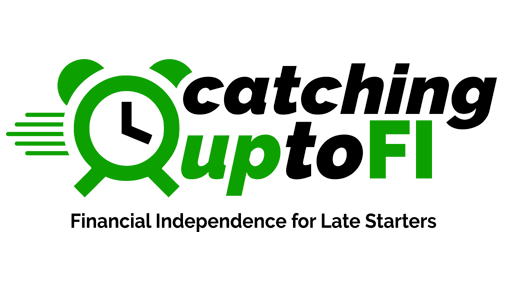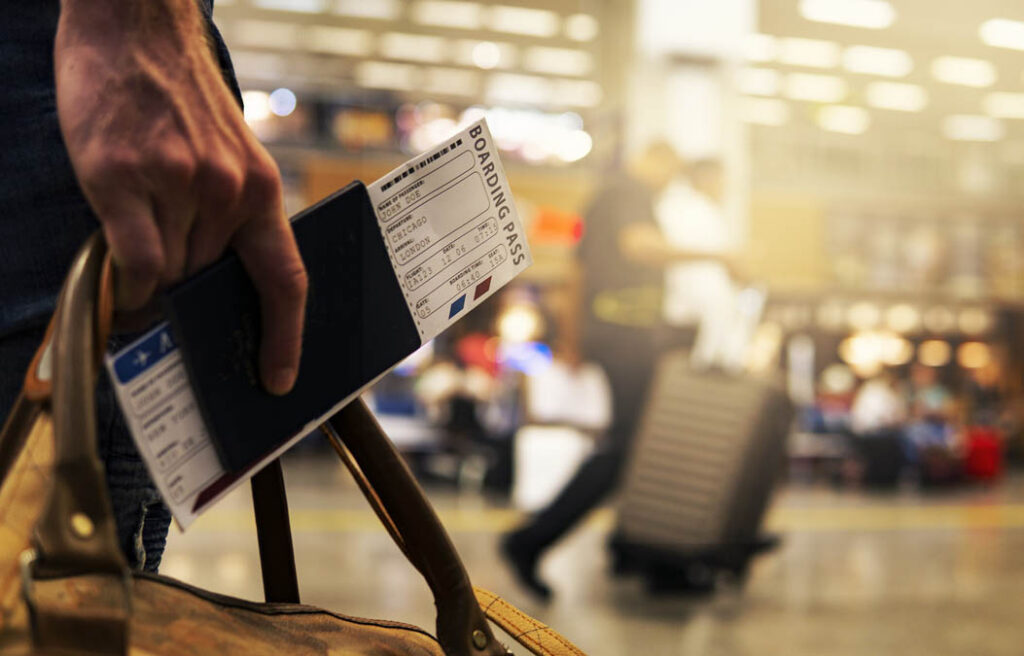At A Glance – You can stretch your vacation dollars by traveling for nearly free with credit card rewards and travel hacking. All it takes is some strategic planning.
What Is Travel Hacking?
Travel hacking is finding a clever solution to a travel-related problem. For most, travel hacking refers to getting the most bang for your travel buck. It is commonly used to describe redeeming credit card points or miles for free travel.
What Are Credit Card Rewards?
Credit card companies give you points/miles for using their card. These points/miles can then be redeemed for free or nearly free travel. The Big 3 of the free travel world are flights, hotels, and rental cars.
There are two main ways to accumulate these points or miles. The first is with sign-up bonuses. Sign-up bonuses happen when you first open a new credit card and usually involve spending a certain amount of money in a given time. Credit card companies buy miles from airlines and points from hotels. Then they offer them as sign-up bonuses in the hopes that you will use that credit card for all your purchases in the future.
The second main way to earn points is to make purchases on your card. You will usually earn 1 point or mile for every dollar spent on a card. On some cards, you can earn anywhere from 2 to 5 times the points per dollar spent in certain categories. Examples could be 3x points spent at restaurants or 5x spent on gas.
Note: I will be using the terms points and miles interchangeably.
What Is Your Why Of Travel
Before you dive into the world of credit card rewards, think about your Why of travel. This could determine your ultimate strategy for which cards to use and when to open them.
Are you a Road-Tripper? You might want to focus on hotel points. Do you love to jet off to far-away destinations? A card that gives you access to international flights might be for you. Do you just want to experience domestic locations and all they have to offer? A Southwest Airlines or United Airlines card could do the trick.
Spend a little time thinking about what kind of travel is in your future.
Who Should Use Credit Card Rewards?
Before we get into the specifics of credit card rewards, I must offer a stern warning. This strategy is ONLY for those who pay their credit cards off – on time and in full every single month! If this is not you, then read the rest of this section and come back to this article later. I mean it! If you do pay your cards off every month, skip this section and keep reading!
If you do not pay your cards off in full and on time every month, here’s what I want you to do.
- Step 1: Build your Emergency Fund. Here’s my article on Why You Need An Emergency Fund And How To Get One.
- Step 2: Pay off all your credit cards. Here’s my article here on Paying Off Credit Card Debt in 6 Steps and my article about debt in general, How To Pay Off Debt.
- Step 3: Work on your credit score. I personally hate the idea of the FICO score, but it’s the way our world works right now. Pay your debts and your bills on time.
Press Pause on credit card rewards, go do these 3 things to make your life even more awesome, and then come back and press Play.
How To Earn Points/Miles From Credit Cards
As mentioned earlier, there are two main ways to earn points on your cards. One is with sign-up bonuses and two is with your spending.
Earning Points With Sign-up Bonuses
Credit card issuers offer incentives to sign up for their cards in the hopes that you will use their card forever. These bonuses usually look like X number of points gained if you spend Y dollars in Z number of months. An example would be United Airlines might offer 60,000 bonus miles after you spend a minimum of $3,000 in the first 3 months your account is open. Note you would need a United MileagePlus account for these miles to be deposited in.
Another example is Chase could offer you 50,000 Ultimate Rewards Points (Chase’s bonus point currency) after spending $4,000 in the first 3 months your account is open on their popular Chase Sapphire Preferred card.
Earning Points With Spending
This strategy for accumulating points/miles is pretty straightforward. You earn 1 point for every dollar spent on a card. Many cards have bonus categories that earn points faster. For example, an airline-branded card could earn you 2x or 3x points for purchasing flights. Or a hotel-branded card might give you 2x points for purchasing hotel nights. Some cards have rotating categories, like 5x points on gas purchases for the next 3 months. After that, the bonus category would be something different like groceries or shipping or restaurants.
Before You Apply For A Credit Card
I’m going to discuss how to apply for your first travel-hacking card, but don’t run out and pick a card to open yet. Be sure you think through what you want from a card. Be strategic with your card selections.
The first thing we need to discuss is your credit score. For me personally, FICO is a 4-letter word, but we have to live with it. There are several things you need to know about your credit score and travel hacking. First, you will need at least a score of 700 to get approved for high-value travel cards.
Many times the online application specifies if you need good, very good, or excellent credit. According to Experian, a FICO score of 580-669 = Fair, 670-739 = Good, 740-799 = Very Good and 800-850 = Excellent.
You can probably check your credit score easily with your bank. I have credit cards with Chase and can check my score at any time. They even give me a history of my score over the last 6 months.
Two more points about your credit score. First, it may go down slightly when you apply for a new card. This drop is usually small and only lasts a short time. Second, don’t apply for a new card if you will be applying for a big loan like a mortgage or car loan in the next few months.
It is also a good idea to check your credit report. You can get a free credit report from the three major credit reporting companies once per year. Those are Experian, TransUnion, and Equifax. Make sure that there are no bogus transactions or suspicious activity. I recently checked mine on Experian and found a name on my account that is not me!
Applying For A New Credit Card
When you apply for a card, always be completely honest!
You can apply for most credit cards online. After filling out the applications you will either get instant approval or a “pending” message. Don’t worry, these pending messages are perfectly normal.
Sometimes, you may not get approved right away. Instead, you get some version of “sorry, not right now.” If you get that, call the reconsideration department for that issuer.
Assuming everything has gone your way and you’re approved, you can expect to receive your new card in the mail in the next 5-10 business days.
After You Recieve Your Card
After you have received your card, activate it according to any instructions sent with the card. Next, create an online account with that card issuer. If you already have an account, make sure the new card has been added to the account.
Link the checking account you will use to pay the card balance to the card in your online account. That way you can pay it at any time. I’m one of those people that pay off my balance manually every week or so.
Most people will also set up automatic payments. This is a great way to get our “lizard brains” out of the process. If you set up automatic payments, be sure you have enough money in your checking account by the card’s due date.
If you are an app person, you can download the card issuer’s mobile app.
Spending Requirements
As mentioned above, there will be a spending requirement that must be met in order to gain the sign-up bonus. The amount varies by card, but the time period is almost always 3 months. For example, spend $3,000 in the first 3 months after issue date. Keep track of when your card was issued and when the 3 months will end. I keep a simple spreadsheet with all my cards listed.
Some spending requirements can be as low as $500 and some as high as $12,000, but $3,000 seems typical. I have also seen temporary offers with an additional bonus requiring additional spending in the first 6 months. I recently opened a Southwest Airlines card that offered 50k miles with a $2,000 spend in the first 3 months. Then an additional 50k miles if I spent $12,000 in the first 6 months.
Note: Don’t spend money on something you weren’t going to buy anyway in order to get the sign-up bonus. This makes the “free” travel not so free! If you need to “buy ahead” in order to meet the spending requirements, that’s OK. Just be sure you are planning that out strategically and not being haphazard. (Hmm, haven’t used that word in a long time!)
Should You Add An Authorized User
Most credit card companies allow you to add an authorized user (like your spouse) to your card. I would not recommend doing this. As long as each person can qualify for their own card, you will gain more bang for your buck if each individual opens their own card. The downside to this plan is there are more cards to be managed. Make sure you pay them all off on time!
How Do You Redeem Your Points/Miles
Now that you have a bucket full of points, how do you use them? That depends on the currency of your points. If you have an airline or hotel-branded card, you are probably holding the points in your account with that airline or hotel. Examples would be United miles would reside in your MileagePlus account, or Hyatt points would be in your World of Hyatt account.
When you are ready to book a flight or hotel, make your selections online as normal. Then look for the box that allows you to select if you are paying in dollars or points. Click this box and you will see how many points the flight or hotel will cost. The points will automatically be deducted from your account when you book your reservation. If you are booking flights, you will still have to pay the taxes which are usually $5.60 per leg.
Transfer Partners
Some credit card companies use their own currency. For example, Chase offers Chase Ultimate Rewards points. Chase URPs are some of my favorite because of their versatility. They can be transferred to 11 different airline programs and three hotel programs. These include United, Southwest, British Airways, Hyatt, IHG, and Marriott.
When a card offers points in its own currency, check to see who their transfer partners are and if that currency will be useful to you. Also, look at the transfer method.
My personal experience is with Chase, so I will use them as an example. If I want to book a flight on United, I select the flights I want on the United website to see how many miles they cost. Then go to my Chase account and transfer the number of Chase URPs I need into my United account. These points transfer one for one. The Chase points will be transferred instantly and show up as United miles. Go back to the United site and book the flight. Easy peazie!
When using a currency like Chase URPs, don’t transfer them ahead of time. They are so flexible that you will want to hold them in your Chase account and only transfer them when you need them. Transfers to a transfer partner are one-way. You cannot transfer your points back to your credit card company.
Note: Miles/points cannot be used on a third-party booking site like Expedia.
Will They Expire?
Before COVID, most miles or points would expire. After COVID, many companies changed that practice, and the points did not expire. The easiest way to keep your miles “fresh” is to have some kind of activity in your account. You can do that by making a purchase on that card from time to time. I keep a United Airlines card so that I can use the perk of boarding group 2 and a free checked bag when I fly United, but I don’t typically use that card for everyday purchases. My Chase card is my go-to card for everyday purchases. If United changes their policy and the miles expire again, I’ll just make a purchase with that card often enough to do the job. The miles that are added to my account resets the clock for expiration.
Other Resources
This article is far from “The Complete Guide on Travel Rewards”! I have only scratched the surface, but I have included what you will need to get a basic understanding and get started filling your travel rewards bucket. I want to include a few other resources you can use for more in-depth strategies.
- Choose FI’s website has three resources for you. Travel Miles 101 online course (free), a list of podcast episodes where Brad and Jonathan talk about travel rewards and their list of recommended cards. All three are great places to learn more.
- The Points Guy. This website talks about everything travel rewards…literally. It covers flights, hotels, attractions, cruises and so much more. Simply search for whatever topic you want to research. I’ll be using it soon to see if I can use points for an all-inclusive resort. You can sign-up for a daily email that keeps you up-to-date on all new changes in the travelsphere!
Recycle Your Cards For Even More Sign-Up Bonuses
Once you’re an “old pro” at credit card rewards and you know which cards work best, you can circle back around and open a new one to receive the sign-up bonus again. You may have to close the existing card to sign up for another. And you can’t earn the bonus within a specific time period from the last bonus – usually 24 months. (If your points are held on the card, be sure to transfer them to another card or another person before you close it.)
Example: I love my Chase Sapphire Preferred card and I want to earn as many Chase URP as possible. I receive my sign-up bonus after making the minimum spend requirements. Then 48 (special rule w/Chase) months later, I close that card and sign up for another. As long as I follow all the rules, I can rinse and repeat.
Some people don’t like to ever close a card because you take a hit on your credit score. I don’t like all those accounts hanging around, so I close them when I no longer need them. But, my credit score is not much of an issue in my season of life.
Note: Most credit cards will let you earn the bonus again if it has been as least 24 months since you last earned the bonus. Chase Sapphire products make you wait 48 months.
Stay Organized!
As you become more skilled at travel rewards, you may have several cards open at once. You will need a way to organize them. I use a simple spreadsheet where I track the company, who opened the card, when it was opened, when the bonus was earned and when to consider closing it. I also track all closed cards so I know what I might want to circle back to.
One reason for this level of detail is so you don’t miss out on what you’re trying to accomplish. Don’t miss the sign-up bonus because you got the minimum spend wrong or forgot the deadline.
Special Rules For Chase
As you can tell, I’m a big Chase fan. That’s not to say that AmEx, Citi, or Capital One aren’t good, too. I just really like Chase products. Chase has a special rule to consider if you get deep into opening multiple cards. Chase has what they call the 5/24 rule. This means one person cannot open more than 5 cards in a 24-month period. This rule applies if you are trying to open a Chase card, but Chase counts all cards you have open, even if they are from another company.
Example: You have a Chase United, Southwest, and Freedom card. You also have an Amex and a Capital One Venture card. They have all been opened in the last 24 months. If you apply for another card from Chase, they will turn you down. You will have to wait until your oldest cards of over 24 months old.
Remember, the 5/24 rule applies to an individual. Your spouse can also have 5/24, which means you can have 10/24 between the two of you.
Other Points Of Interest
There are several other items I want to share about travel rewards. I will just list them here in no particular order:
- If you own or run a business, check out the business credit card offerings. (The chase 5/24 rule is separate for business cards).
- Not all cards are co-branded as with airlines or hotels. Some cards earn cashback or let you wipe out a travel charge after the fact.
- Always read the fine print in the card’s rules and offer details.
- You can book and fly on alliances. If the airline you want to fly is part of an alliance, your points may transfer through another airline. For example, your URPs may transfer to any airline in Star Alliance.
- If your credit card issuer has a travel portal, like AmEx or Chase, check the prices through the portal.
- You can transfer URP to another person.
- If you close a card that has a points balance, transfer those points to another card in the same system before you close it.
- Many cards have extra perks like covering the cost of TSA precheck or Global Entry, free checked bags, or travel insurance.
- Most (but not all) cards come with an annual fee. In my experience, the fee is worth the rewards. If you are planning on closing a card, do it before the fee is charged again, or call the credit card company and ask for the fee to be waived.
- Higher fee cards usually come with some travel credits that wipe out part of the fee.
Credit Card Rewards Warning!
My warning about the misuse of credit cards is soooo important I’m going to state it again! Do not sign up for credit cards to get the bonuses if you do not pay them IN FULL, EVERY MONTH, AND ON TIME! Also, don’t spend more than you would normally spend in order to meet the minimum spend requirement. There are strategies to spend ahead in order to meet it, but don’t buy something you weren’t going to buy anyway. The “free” travel is not free at that point.
Conclusion
I know this has been a LOT of information. If you think travel rewards if something you want to try, check out one of the resources listed above to get more comfortable with how it works. Don’t try to take it all in at once. Just start with one card and see if this is something you’d like to learn more about.
Key Takeaway – If your credit is good and you are someone who pays their credit cards off every month, you can take advantage of credit card bonuses for nearly free travel.
Assignment – If you’ve never traveled hacked before, take ChooseFI’s Travel 101 course to get you started on planning your first free trip.









